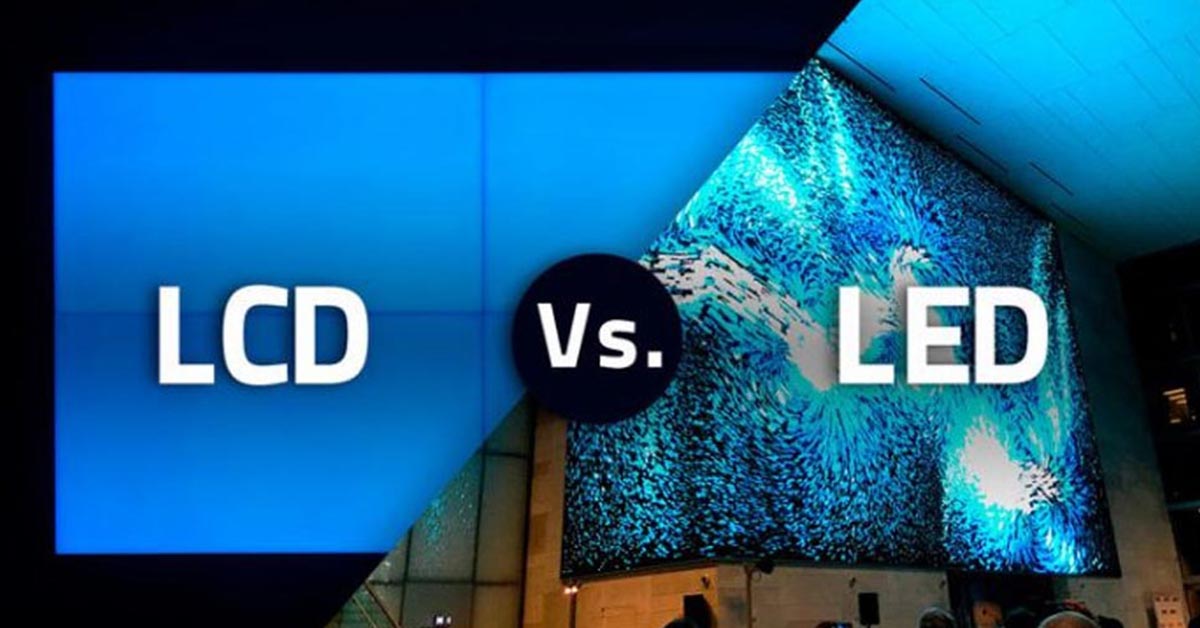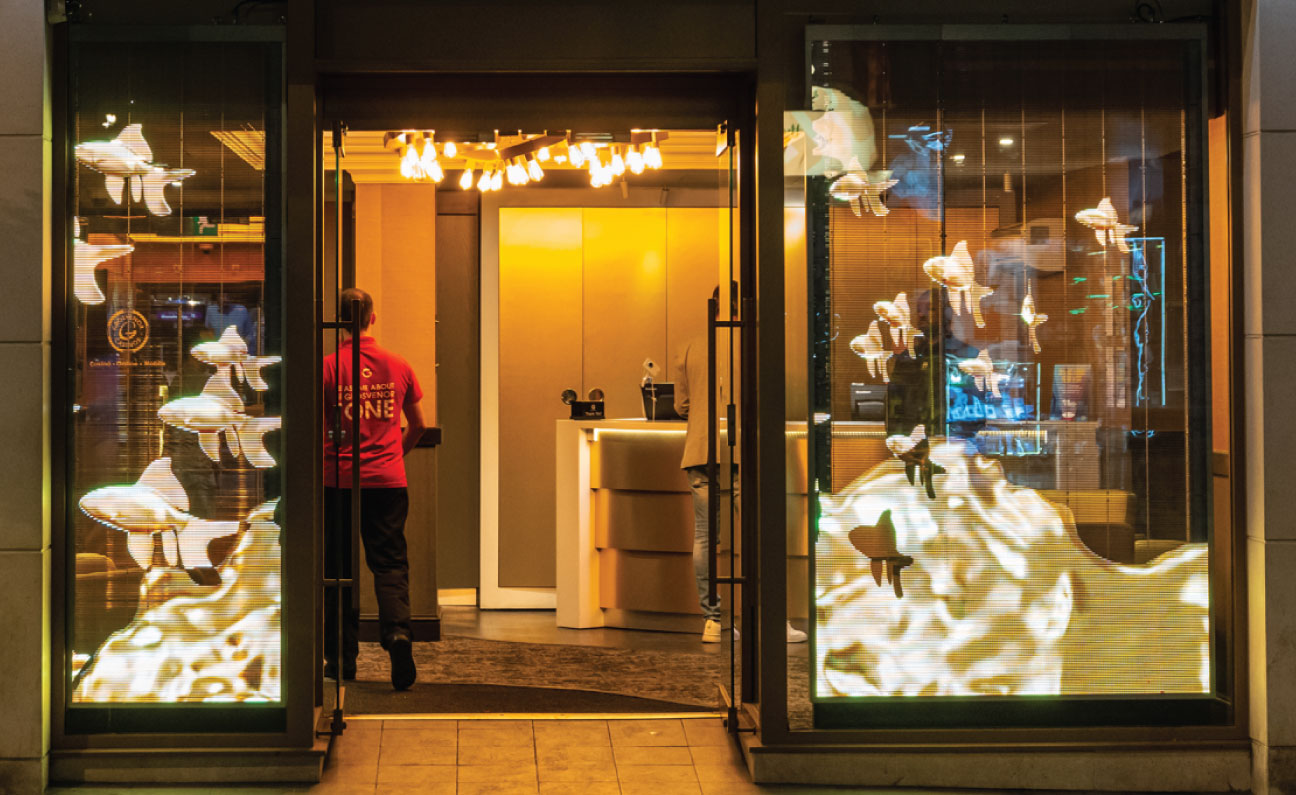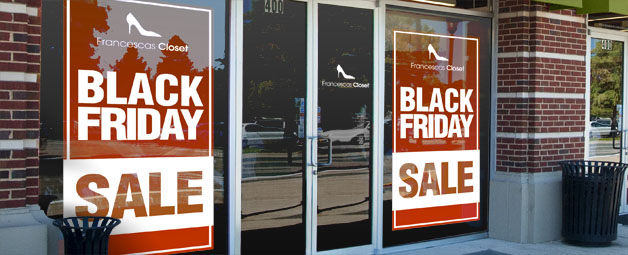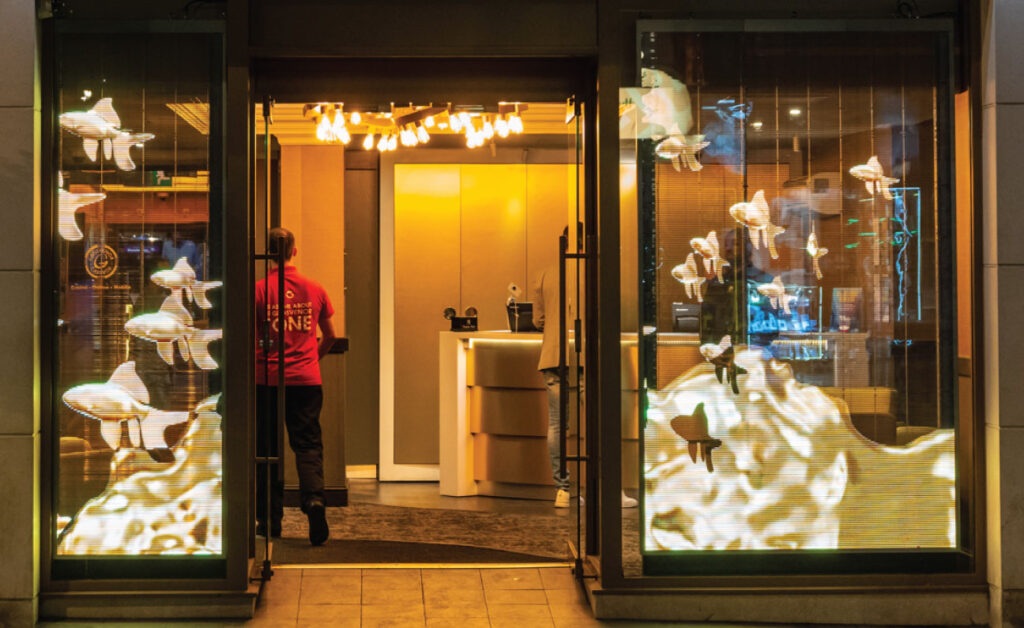

In the age of experiential retail and high-stakes visual marketing, storefront windows are more than just architectural elements, they can also be considered as storytelling surfaces. Yet, businesses are often caught in a design dilemma: how do you showcase branding, promotions, or digital content on your windows without blocking natural light or obscuring the view inside? In essence, how do you approach window advertising without blocking the view?

The answer lies in materials and technologies designed to do both, deliver high-impact visuals while keeping the view open and welcoming. This article explores how modern brands are turning their windows into transparent storytelling canvases and how you can too.
Think about the last time you passed a store with windows covered in solid posters or blackout vinyl. Did you walk in or keep walking?
Studies in retail psychology consistently show that visibility into a space or what researchers call visual permeability boosts approachability, trust, and foot traffic. People are more likely to enter environments they can see into, especially when they get a glimpse of products, people, and ambiance inside.
That’s why keeping your storefront visually open is not just a design decision but it’s also a strategic one.
Fortunately, there are now several materials and display technologies that allow you to advertise directly on windows without compromising visibility. Below are the top options, each with unique benefits for different business goals.
These are printed on clear vinyl, meaning only the actual design or lettering is visible. The rest remains see-through, offering a subtle but professional way to add branding, logos, hours, or messages to your windows.

Why choose it? It’s simple, clean, and perfect for businesses that want to maintain a minimalist aesthetic while still showcasing core brand elements.
Perforated vinyl film is a classic solution where small holes in the film allow visibility from the inside while displaying printed graphics on the outside. Depending on the ratio, which are typically 70/30 or 50/50—you can achieve the right balance between image clarity and interior visibility.

Ideal for: Street-level retail, service centers, or cafes that want to turn their windows into bold visual statements while retaining privacy and light.
These are easy-apply, easy-remove graphics that stick to glass using static instead of adhesive. They’re great for seasonal sales, limited-time promotions, or events.

Best for: Temporary signage or businesses that frequently change offers and want flexibility without leaving behind adhesive residue.
While not transparent in the traditional sense, frosted films diffuse light beautifully and add a modern, upscale look. You can also cut in logos or messaging to allow partial see-through effects.

Great for: Salons, offices, spas, or luxury retailers looking to blend privacy and style.
This is the cutting-edge solution for truly dynamic window advertising. Transparent LED film is a thin, flexible screen that adheres directly to the inside of your glass. It can display high-resolution videos, text, or animations, all while remaining up to 90% transparent when not in use.

With brightness levels of up to 6000 nits, these displays are visible even in direct sunlight, and because they’re almost invisible when off, your storefront remains open and inviting.
Perfect for: High-traffic retail, flagship stores, entertainment venues, or tech-forward businesses looking to make a big impression.
Choosing the right option in window advertising without blocking the view depends on your goals, budget, and brand style. Here’s a quick breakdown to help you decide:
| Goal | Best Option |
|---|---|
| Minimal branding with clear visibility | Transparent vinyl decals |
| Bold graphics with some privacy | Perforated vinyl film |
| Seasonal or temporary messaging | Static cling graphics |
| Elegant privacy with light flow | Frosted window film |
| Animated content and maximum impact | Transparent LED film displays |
To keep your window graphics looking sharp and effective:
These advertising solutions are more than just eye candy, but they deliver real-world impact:
The outlook is clear and full of potential. Expect exciting new advancements in window advertising without blocking the view:
Window advertising doesn’t have to come at the expense of visibility. Thanks to advanced materials and digital innovation, you can keep your brand bold, elevate the customer experience and achieve window advertising without blocking the view.
Whether you’re applying a simple logo decal or installing transparent LED displays, the key is clarity, not just in glass, but in message. Let your windows speak, without closing the curtain on what’s inside.